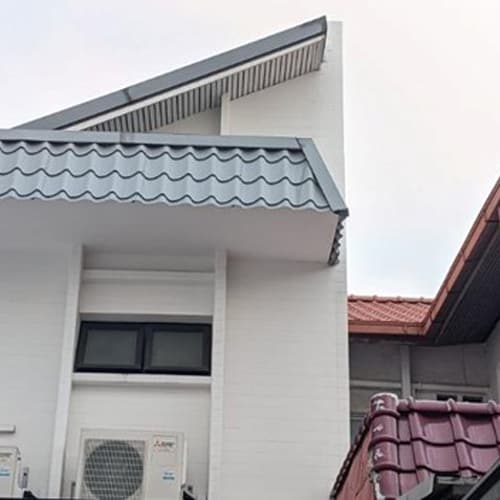Common causes of roof leakage
Most roof leaks are caused by one of the following common factors. Prevention is of course better than repair. Once you get to know the main offenders, you can develop a strategy to avoid problems before they arise.
People
It’s OK to walk on your roof. Roofs can tolerate modest foot traffic, but heavy traffic can be a
problem on the membrane that isn’t protected with walk pads — especially around equipment like HVAC systems. The biggest danger is human error or carelessness, like dropped tools or mishandled parts.
Age of Roof
Your roof eventually needs to be replaced due to wear and tear. How long a roof lasts depends largely on the roofing material used. Slate, tile, and metal roofing give you the longest life before it needs to be replaced. These materials can often last 50 years or longer. As it gets old, the roofing can become brittle and deteriorate. This prevents it from protecting your home from leaks. Damage or neglect can shorten the life of your roof, no matter the material. If you know your roof is getting older or you haven’t maintained it, the leak could be due to a normal breakdown due to old age.
Clogged Gutters
Your gutters are meant to help water travel away from the roof. When a blockage forms and they get clogged, that travel stops. It’s common for falling leaves, sticks, and dirt to get stuck in gutters. When this debris builds up, the rainwater won’t be able to freely drain or fall away from the house, and it could lead to a leaky roof.
Roof Vents
Roof vents are essential for letting heat and moisture escape from your attic, but they can also be a cause of leaking if they are damaged or sealed improperly.
Holes
Weather. Constant exposure to the elements like strong winds, high temperature and prolong heavy rainfall can create holes in your roof that can lead to water damage. Singapore, being a tropical country, the sun beats on the roof almost every day. Storms can whip tree branches and other debris at mercilessly high speeds. Periods of intense heat and temperature swings can all degrade roofing material as well. It’s important to look out for these types of holes during your routine roof inspection, and patch them up as soon as you spot them.
Your Flashing Has Cracked
Roof flashing directs water away from important parts of the roof, but it can also be a spot that’s vulnerable to roof leaks. Regularly check the flashing for cracks and damage, making sure it’s properly sealed.
Improperly Sealed Valleys
A roof valley (the point where two sloped roofs meet) is designed to help water flow off of the roof. But if the valley isn’t properly sealed, this can be another site of roof leaks.
Skylights
Skylights may be a nice way to let natural light into your home, but they can also be a common cause of a leaky roof. Make sure your skylights are fitted and installed properly to avoid water damage to your home.
Rooftop Equipment
The areas near heavy equipment like HVAC units and exhaust fans are often the site of punctures and leaks. Screws can be pulled out, and washers or gaskets can dry rot, all creating potential entry points for water. Ventilation isn’t waterproof, and rain can get through HVAC access panels.
Although there are different ways to fix the leaking problem of your roof, it is best to contact an expert to help you solve this. An experienced and knowledgeable waterproofing specialist contractor can detect and isolate the leakage areas and specifically repair the affected areas.
With more than 20 years of experience in waterproofing, SWC Construction is committed to providing professional advice and solutions to your water leakage problem. Call us for a free consultation, we will provide our best waterproofing work.



